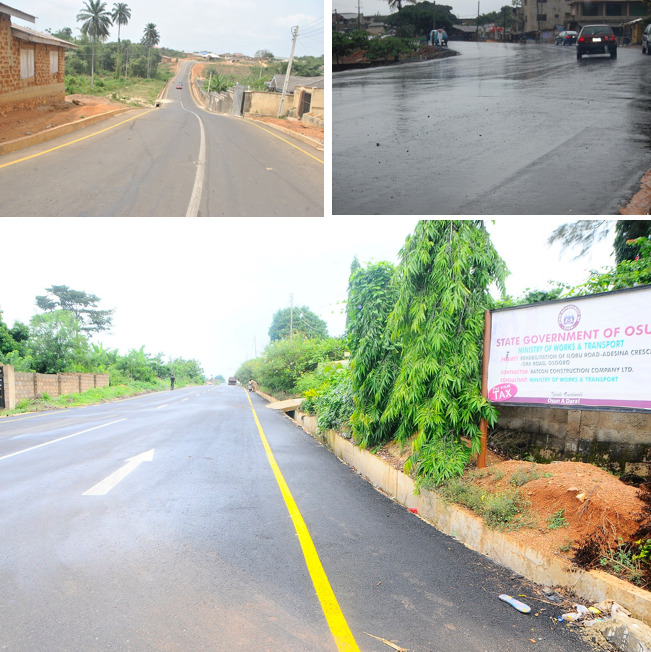People living in rural areas face a vastly different economic reality compared to their urban counterparts. There are few reliable statistics of rural poverty in Nigeria but we can make reasonable inferences from the available data. The Multiple Indicator Cluster Survey (MICS) is the most thorough survey of Nigerian households and it is conducted by the National Bureau of Statistics (NBS) in tandem with international organisations like the World Bank and UNICEF. According to the latest version in 2017, refrigerator ownership is four times as high in urban areas as it is in rural areas, the female literacy rate is twice as high, and rural areas have a much higher rate of out-of-school children (33%) than urban areas (14%). Tellingly, 29% of Nigeria’s rural population is in the bottom 20% of the wealth distribution, while only 6% is in the top 20% of the wealth distribution. In Nigeria, poverty is a rural phenomenon, and the same is true all over the world; three-quarters of the world’s poor live in rural areas.
Transforming towns to cities
The agreed solution to this is urbanisation, and in developing countries like Nigeria, that generally means moving people from rural regions to urban locales—the share of the population living in urban areas has grown from 35% to 50% since the start of this millennium. This approach makes sense; after all, development theory suggests that there are no poor people, only poor places, but it is unsustainable as a single solution. A quick look at increasing congestion and deteriorating sanitation in major cities as proof. Lagos, Nigeria’s premier city, receives 86 new migrants an hour. These newcomers jostle on already-crowded streets as the state boasts an average of 227 vehicles per kilometres, compared to a national average of 11 vehicles. As a result, Lagosians spend nearly 30% of their days in traffic. Moreover, rural emigrants increasingly find themselves joining the ranks of the urban poor. According to the 2017 MICS, more men in rural areas are satisfied with their income than in urban areas (a statistic partly explained by differences in living standards and aspiration levels). This reality manifests clearly in the proliferation of slums in the city.
All things considered, it is evident that poverty alleviation and sustainable development requires us to transform towns to cities just as quickly as we move people from towns to cities. Therefore, rural development has a key role to play in policy. This link between rural development and economic growth is well established: decades ago, the Food & Agriculture Organization of the United Nations (FAO) found that 85% of the differences in poverty rates between places can be explained by how rural they are.
In Nigeria, one state that has made interesting strides in designing policies for rural development is Osun. The state is mainly rural, but, in recent years has tried to import some of the benefits of urbanisation. Rural areas tend to lack a few key development drivers. The first is physical infrastructure; Nigeria’s rural electrification rate is 23% while the urban rate is 87%. The second is digital infrastructure; the MICS reveals that the proportion of urban youths that have ever used a computer is nearly three times as high. And the last is social infrastructure like health services and quality education. Meanwhile, the absence of these features discourages skilled labour from living and working in rural areas as they don’t want to feel like 2nd class citizens. On the other hand, the strength of cities is captured in the concept of agglomeration—the idea that people and firms enjoy exponential economic benefits when they cluster together. In the short term, it is practically impossible to transfer these benefits of agglomeration from cities to towns but you can emulate some, and that is the approach that was adopted by Osun State. For example, the state government focused on improving household electrification—boosting it by 20% overall—and connecting over 2500 farming households to electricity, thereby reducing the rural-urban infrastructure gap.
The most interesting aspect of Osun’s approach to rural development is the focus on physical connectivity, an important feature of cities. The government invested heavily in rural access roads with the presumed aim of facilitating transport and trade, both within rural areas and between rural and urban areas. One notable policy was termed O-RAMP, a World Bank collaborated rural access mobility project, implemented in seven Nigerian states aimed at improving access to rural areas. The O-RAMP scheme was ultimately responsible for 200 kilometres of 700 kilometres of new rural roads delivered in the state over an eight-year period. A separate partnership with the World Bank prioritised road maintenance as one challenge with road construction in Nigeria is that work is often done to a low standard and the road is poorly maintained, leading to the inevitable outcome of reconstruction a few years down the line. The chosen solution here was a Community Based Road Maintenance Team, which sought to involve local communities and give them a direct stake in the maintenance of newly constructed roads.
Improving rural connectivity as a means to rural development paid dividends as the state reported a 60% reduction in transport costs for farmers to get produce to markets as over 400,000 commuters were served by the new township roads. There were also notable spill over effects, including a 200% increase in land prices in the surrounding communities, and an additional 30,000 registered voters in Ife South Local Government because of new access roads built within the area. Finally, health outcomes also improved as residents found it easier to get to hospitals (the data suggests a 40% increase in health access). All these changes should eventually manifest in greater economic activity as new businesses locate in rural areas since they can now attract staff to live in those communities.
Agriculture investment is rural investment
Although these initiatives to improve rural access are laudable, they have an obvious flaw. In simple terms, the benefit of moving around an area is proportional to the level of economic activity and opportunity available in both places. Connecting two rural towns without any notable trading potential or where neither basic social nor economic infrastructure exist would profit little. The state partly addressed this through a simultaneous focus on agriculture, the backbone of any rural economy. It is often said that agriculture investment is rural investment and it is easy to see why: 33% of urban dwellers in Nigeria own farmland compared to 80% of rural dwellers. A similar trend exists abroad; 850 million Indians live in rural areas, and nearly 60% of them depend on farming for survival.
Apart from increasing capital spending on agriculture—from ₦1 billion in 2010 to ₦9 billion in 2018, the Osun strategy centred around three pieces: access to inputs, access to credit, and access to markets. In terms of inputs, the state distributed seedlings (cocoa, oil palm, etc.) to rural farmers, as well as subsidised fertilisers through distribution centres in each local government. The state also refurbished warehouses in Oyan (abandoned since 1991) and Osogbo, with a combined storage capacity of 1,500 metric tonnes, along with nearly 100 smaller temporary storage facilities. Storage facilities are crucial because storage constraints often prevent smallholder farmers from expanding output for fear that it would be wasted if they cannot quickly sell it. In extreme situations, it dissuades them from cultivating arable portions of their land.
In line with the broader federal strategy of expanding credit to the agriculture sector, over ₦2.5 billion was disbursed to farmers through farming cooperatives, ostensibly to boost the chances of the farmers repaying their debt. Given the long gestation period of rural development policies, the state institutionalised a number of these interventions; a law was enacted to create a land bank for the state, while the Governor passed an Executive Order to set up the Agriculture Land Planning & Development Authority, which would ensure adequate land validation, allocation, and so on. The overall results were quite impressive as the state recorded a 50% growth in agriculture GDP per capita in just under a decade.
Taking it a step further
Direct intervention in rural areas is useful at the early stage of development but the government’s role would need to shift to an enabler in time. For example, direct fertiliser distribution has its limits and state governments can learn from the public-private approach framework used in the Growth Enhancement Support Scheme (GESS). More generally, the next level of innovation would need to focus on boosting productivity by several levels and that usually means leveraging technology and addressing inhibitive farming practices. Finally, most food demand comes from urban areas (inside and outside the state) so diversifying and matching investment and efforts to successfully piggyback on urban economic growth and rising demand is key, particularly in light of a national policy of food security and food self-sufficiency. The principle behind this was employed to some extent in Osun State as local farmers were included in the value chain for O-MEALS, the government’s flagship school-feeding program which ran across the state. In fact, over half of the farm produce used as part of the O-MEALS program was provided by farmers involved in one of the government’s cooperatives-led credit disbursement schemes.
When it comes to rural development in Nigeria, the stakes could not be higher. Emulating the approaches used in other countries is always an option, but the experience of particular states in the country like Osun, serves as arguably a better sounding board for what can work in different parts of Nigeria. Ultimately, poverty alleviation and economic growth would require a better understanding of rural economies. Cities are all alike; every rural area is rural in its own way.











